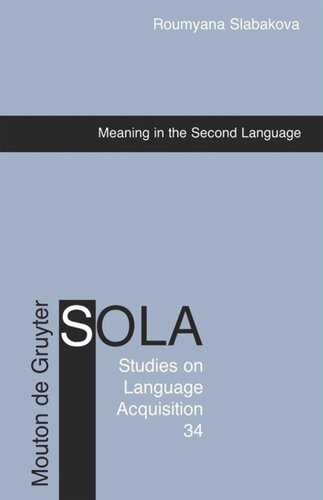

Most ebook files are in PDF format, so you can easily read them using various software such as Foxit Reader or directly on the Google Chrome browser.
Some ebook files are released by publishers in other formats such as .awz, .mobi, .epub, .fb2, etc. You may need to install specific software to read these formats on mobile/PC, such as Calibre.
Please read the tutorial at this link: https://ebookbell.com/faq
We offer FREE conversion to the popular formats you request; however, this may take some time. Therefore, right after payment, please email us, and we will try to provide the service as quickly as possible.
For some exceptional file formats or broken links (if any), please refrain from opening any disputes. Instead, email us first, and we will try to assist within a maximum of 6 hours.
EbookBell Team

0.0
0 reviewsThis book reviews recent research on the second language acquisition of meaning with a view of establishing whether there is a critical period for the acquisition of compositional semantics. A modular approach to language architecture is assumed. The book addresses the Critical Period Hypothesis by examining the positive side of language development: it demonstrates which modules of the grammar are easy to acquire and are not subject to age effects. The Bottleneck Hypothesis is proposed, which argues that inflectional morphology and its features present the most formidable challenge, while syntax and phrasal semantics pose less difficulty to learners. Findings from the neurofunctional imaging (PET, fMRI) and electrophysiology (ERPs) of L2 comprehension are reviewed and critically examined. Since it is argued that experimental tasks in those studies are mostly in need of linguistic refinement, evidence from behavioral studies of L2 acquisition of semantics are brought to bear on comprehension modeling. Learning situations are divided into two types: those presenting learners with complex syntax, but simple semantics; and those offering complex semantic mismatches in simple syntactic contexts. The numerous studies of both types reviewed in the book indicate that there is no barrier to ultimate success in the acquisition of phrasal semantics.